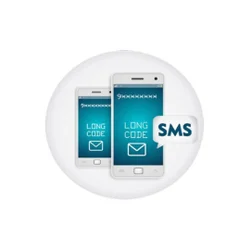In the fast-paced world of digital marketing, businesses continually seek effective ways to connect with their audience. One such method gaining traction is long code SMS marketing. Unlike short codes, which are typically used for high-volume messaging, long codes allow brands to send personalized messages through standard phone numbers, enabling a more direct and engaging form of communication.
In this blog post, we will delve into the importance of analyzing the ROI (Return on Investment) of long code SMS marketing campaigns, offering insights into how businesses can maximize their effectiveness. If you’re considering implementing a long code sms service in India, understanding its impact on your marketing strategy can be crucial for success.
Understanding Long Code SMS Marketing
Long code SMS marketing utilizes standard 10-digit phone numbers to send messages to customers. This approach is particularly beneficial for businesses that want to communicate with their customers on a personal level without incurring the costs associated with short codes. Long codes can be used for various purposes, including customer service, appointment reminders, promotions, and transactional messages.
Why Long Code SMS Marketing?
- Personalization: Long codes allow for two-way communication, enabling businesses to create a more personalized experience for their customers.
- Cost-Effectiveness: Compared to short codes, long codes are generally less expensive, making them accessible for small and medium-sized enterprises (SMEs).
- Higher Engagement Rates: SMS messages have an impressive open rate of 98%, significantly higher than emails, making long code SMS an effective tool for reaching your audience.
Key Metrics for Measuring ROI
To assess the ROI of long code SMS marketing campaigns, businesses need to focus on several key metrics:
1. Cost per Message
Calculate the total cost incurred for sending SMS messages. This includes carrier fees, software subscriptions, and any additional costs associated with campaign execution.
2. Response Rate
Track how many recipients engaged with your messages. This can be measured by tracking replies, clicks on links, or any other action taken by the recipients in response to your SMS campaign. A higher response rate indicates a more effective campaign.
3. Conversion Rate
Analyze how many recipients took a desired action, such as making a purchase or signing up for a service, after receiving the SMS. This metric is crucial for understanding the effectiveness of your messaging and offers.
4. Customer Lifetime Value (CLV)
Evaluate the long-term value of customers acquired through SMS campaigns. By understanding CLV, businesses can better assess the effectiveness of their marketing efforts and determine whether the initial investment is justified.
5. Churn Rate
Monitor the rate at which customers stop engaging with your brand. A high churn rate may indicate that your SMS campaigns are not resonating with your audience or that you need to refine your messaging strategy.
Calculating ROI: The Formula
To calculate the ROI of your long code SMS marketing campaigns, you can use the following formula:ROI=Net ProfitTotal Cost×100\text{ROI} = \frac{\text{Net Profit}}{\text{Total Cost}} \times 100 ROI=Total CostNet Profit×100
Where:
- Net Profit is the total revenue generated from the SMS campaign minus the total costs associated with the campaign.
- Total Cost includes all expenses related to the campaign, such as message costs, platform fees, and labor costs.
For example, if a campaign generated $5,000 in revenue, and the total cost was $1,000, the ROI would be:ROI=5000−10001000×100=400%\text{ROI} = \frac{5000 – 1000}{1000} \times 100 = 400\% ROI=10005000−1000×100=400%
Best Practices for Maximizing ROI
To ensure that your long code SMS marketing campaigns deliver the best ROI, consider the following best practices:
- Segment Your Audience: Tailor your messages to specific customer segments for increased relevance and engagement.
- Test and Optimize: Use A/B testing to refine your messages and offers. Analyze which variations yield the best results.
- Timing is Key: Send messages at times when your audience is most likely to engage, such as during peak shopping hours or special promotions.
- Clear Call to Action: Ensure that each message has a clear and compelling call to action, guiding recipients on what to do next.
- Monitor and Analyze: Continuously monitor campaign performance and analyze metrics to make data-driven decisions for future campaigns.
Conclusion
Analyzing the ROI of long code SMS marketing campaigns is crucial for businesses looking to optimize their marketing strategies and maximize their investment. By focusing on key metrics, using effective calculation methods, and implementing best practices, brands can create successful SMS campaigns that engage their audience and drive meaningful results. As SMS marketing continues to evolve, staying informed and adapting to new trends will ensure that your campaigns remain effective and profitable.
Investing in long code SMS marketing can be a game-changer for businesses. With the right approach, you can turn every message into an opportunity to connect, engage, and grow your customer base.
Final Thoughts
Embrace the power of long code SMS marketing and start analyzing your ROI today. By doing so, you’ll be well on your way to crafting compelling campaigns that not only resonate with your audience but also significantly boost your bottom line.

